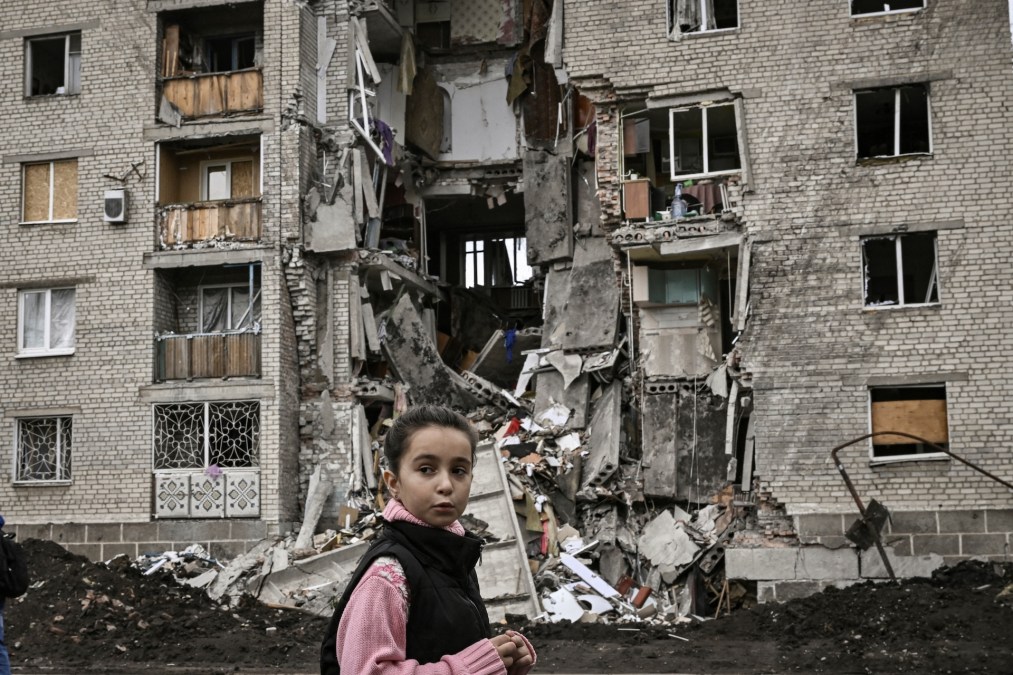Network of hyperlocal Russian Telegram channels spew disinformation in occupied Ukraine

The Russian disinformation effort in Ukraine is so extensive that it now includes a hyperlocal Telegram network which spews disinformation customized to resonate in individual towns across occupied Ukraine, according to recent research published by the Ukrainian think tank Detector Media.
The channels, which are anonymous, are used to “legitimize the occupation of specific villages and cities and to establish control over the information environment,” Detector Media wrote in a blog post about its research. The Telegram channels feature Russian propaganda and are entitled with the name of the town for which they serve as a “news” source. According to Detector Media, at least 88 such Telegram channels have been registered since Feb. 24, with a majority clustered in towns near Kiev.
Many of the channels’ subscribers are bots, a conclusion which the Detector Media researchers arrive at based in part on how quickly their subscriber bases mushroomed. In other cases, channels’ subscription numbers grew even when mobile communication was unavailable in a given city as happened in the case of the “Berdyansk Tomorrow“ iteration, the researchers say.
The Kremlin has long used “affinity groups” to amplify the reach of its disinformation efforts, according to Suzanne Spaulding, a former undersecretary at the Department of Homeland Security who is now the director of the Defending Democratic Institutions project at the Center for Strategic and International Studies.
“Targeting specific narratives to specific populations” is a timeworn Kremlin propaganda tool, she said, though the geographic spin being used in occupied Ukraine appears to be a new manifestation of the method. The Kremlin will generate an audience by appealing to its targets’ interests, Spaulding said, and “then begin to seed it with their narratives.”
“What they were able to do with this is see who liked things and then pull them into separate communications and sort of pull them down into the vortex,” Spaulding said.
But the content on the Telegram channels is not winning Ukrainian hearts and minds, according to Roman Osadchuk, a Ukraine-based researcher for the Atlantic Council’s Digital Forensic Research Lab.
“They mainly reassure the Russian or pro-Kremlin public rather than win new and vast audiences among Ukrainians,” Osadchuk said via email.
“These pushes for these referenda for independence or for annexation to Russia — they need to somehow launder the narratives through local people that are not necessarily occupying forces directly.”
Gavin wilde, carnegie endowment for international peace
However, even if the channels win over just one person per occupied town, they could prove valuable to the Russian effort, said Gavin Wilde, a senior fellow at the Carnegie Endowment for International Peace.
Wilde said the hyperlocal disinformation effort is a helpful recruitment tool for the Russians because through it they can identify and empower sympathetic individuals in a variety of geographic areas. And even just a handful of people could be valuable in such an effort, he said.
“These pushes for these referenda for independence or for annexation to Russia — they need to somehow launder the narratives through local people that are not necessarily occupying forces directly,” said Wilde, a disinformation scholar who previously served on the National Security Council, where he worked on cybersecurity, information warfare and Russia. “What they can do is try to identify standard bearers within the local population who might be useful.”
The Telegram channels focus on discrediting Ukraine and its leaders, including mayors and regional administrations, the Detector Media researchers said. The propaganda shared over the channels highlights Russian military victories and demonizes the Ukrainian army. Detector Media said the channels’ propaganda also focuses on local “denazification,” a term that refers to so-called Nazi Ukrainians whom the Russians allegedly caught in the occupied settlements.
The channels also urge Ukrainians to evacuate to previously occupied parts of the Donetsk and Luhansk regions or the occupied Crimea, according to Detector Media. They praise Russian for sending humanitarian aid and blame the Ukrainian political leadership for causing the humanitarian crisis.
“These measures are aimed at the resistance of the occupied territories: The spread of disinformation on those territories by Russian sources might demoralize the opposition,” said Osadchuk, the Ukraine-based disinformation researcher. “Russians consistently try to create an alternative view on the war for Ukrainians.”

This story was featured in CyberScoop Special Report: War in Ukraine






